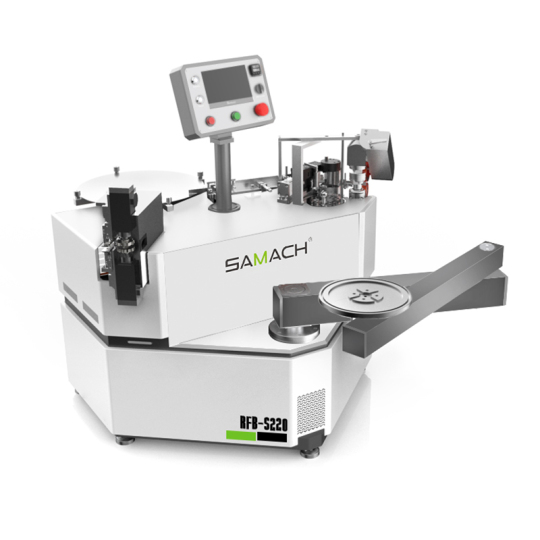
## Why Edge Banding Machines Still Matter in 2025
In today’s cabinet and furniture workflows, the Edge Banding Machine is central to seamless edges using PVC/ABS/veneer/melamine tapes.
From craft studios to large factories, the right edgebander reduces defects and optimizes ROI.
## What Is an Edge Banding Machine?
An Edge Bander bonds a tape onto exposed panel edges and refines it to a flush profile.
Typical stations include: preparation, glue application, tape feeding with pressure rollers, end trimming, flush trimming, and scraping/buffing.
## From In-feed to Buffing: The Flow
1. Panel In-feed — Guide the panel along the fence and pressure beam.
2. Edge Squaring — Remove 0.3–1.0 mm to eliminate saw chatter and out-of-square conditions.
3. Glue — Thin, consistent glue lines improve durability.
4. Feed & Pressure — Primary/secondary rollers press the tape.
5. End Cut — Clean ends define the part geometry.
6. Flush Trimming — Accurate tracking minimizes tear-out.
7. Corner Rounding (if equipped) — Servo rounding on advanced models.
8. Fine Finish — Scrapers remove micro-lip.
## Choosing a Machine Class
• Manual/Portable — lowest cost, on-site fixes, but variable quality and slow throughput.
• Entry Automatic — stable quality at modest volume; core trimming features included.
• Mid-Range Automatic — add pre-milling, PUR-capable or dual pots, corner rounding, smarter controls.
• Premium — top speed, servo automation, barcode/CNC integration.
• Curve Banders — supports non-straight edges; slower but flexible.
## Adhesive Systems for Edge Banding
• EVA — budget friendly, simple upkeep; glue line can show on high-gloss/dark decors.
• PUR Hot-Melt — thin glue line, excellent resistance, strongest bond; requires strict handling/cleaning.
• Hot-Air/Laser — stunning seam quality; requires compatible tapes and tuning.
Tip: Stock EVA + PUR if your machine supports this website quick glue-pot swaps.
## Key Specifications to Compare
• Feed speed — go as fast as quality allows; align with cutting capacity.
• Thickness range — ensure it fits your product mix.
• Edge tape — specify by décor and durability goals.
• Edge prep — invest here for visible quality gains.
• Corners — important for doors/drawer fronts.
• Fine finish — fewer tool marks, even sheen.
• Glue tech — drives TCO, appearance, and process control.
• Control — recipe library reduces operator error.
• Dust extraction — ports per station protect finish and health.
• Switchover — faster changes, higher OEE.
• Utilities — verify power, air, space.
## Best-Fit Recommendations
• Custom shops — choose pre-mill + PUR, rounding, smart controls.
• Projects & rollouts — prioritize speed + consistency.
• Premium aesthetics — hot-air/laser for invisible seams.
• Flat-pack — durability + speed are key.
• First automation step — entry auto with EVA glue pot and essential trimming/scraping.
## Run It Right: Practical Tips
• Keep utilities stable for predictable quality.
• Pre-mill lightly for best ROI.
• Tune glue temperature/viscosity per spec; avoid overheating EVA; handle PUR carefully.
• Calibrate pressure rollers—too low = weak bond, too high = squeeze-out.
• Keep cutters sharp; dull tools cause fuzzing/tear-out (especially veneer).
• Clean squeeze-out immediately; use proper PUR cleaners and timing.
• Train safety: guards, E-stops, LOTO, PPE, hot surfaces.
## Troubleshooting Common Defects
• Visible glue line — raise temp within spec, add pressure, verify pre-mill; consider PUR/zero-joint for dark/gloss.
• Corner peel — refine rounding, ensure activation/press time, clean surfaces.
• Veneer tear-out/chatter — sharpen tools, slow feed, optimize cutter geometry.
• Excess glue — tune gap/pressure.
• Drift — inspect guides and tape tensioners.
## Choosing Edge Banding Materials
Choose PVC/ABS for durability and variety; wood veneer for natural aesthetics; thin melamine for budgets; aluminum/acrylic for statement edges with special setup.
Zero-joint success depends on color matching.
## Line Integration Tips
Use barcodes/recipes, buffers, and conveyors to stabilize takt.
## ESG & Edge Banding
Choose adhesives/tapes that reduce emissions; invest in extraction.
## Frequently Asked Questions
Ideal feed speed? Start with OEM recommendations, then adjust for finish targets.
EVA vs PUR? EVA is cheaper to clean; PUR bonds stronger with a thinner line.
Pre-milling? Improves adhesion.
Zero-joint explained: No liquid glue pot.
Cutter care? Track by QC.
## Bottom Line
With solid setup and maintenance, the right edgebander elevates finish on every batch. }